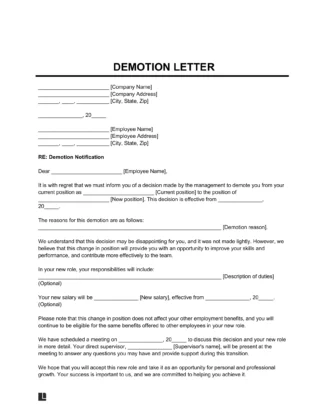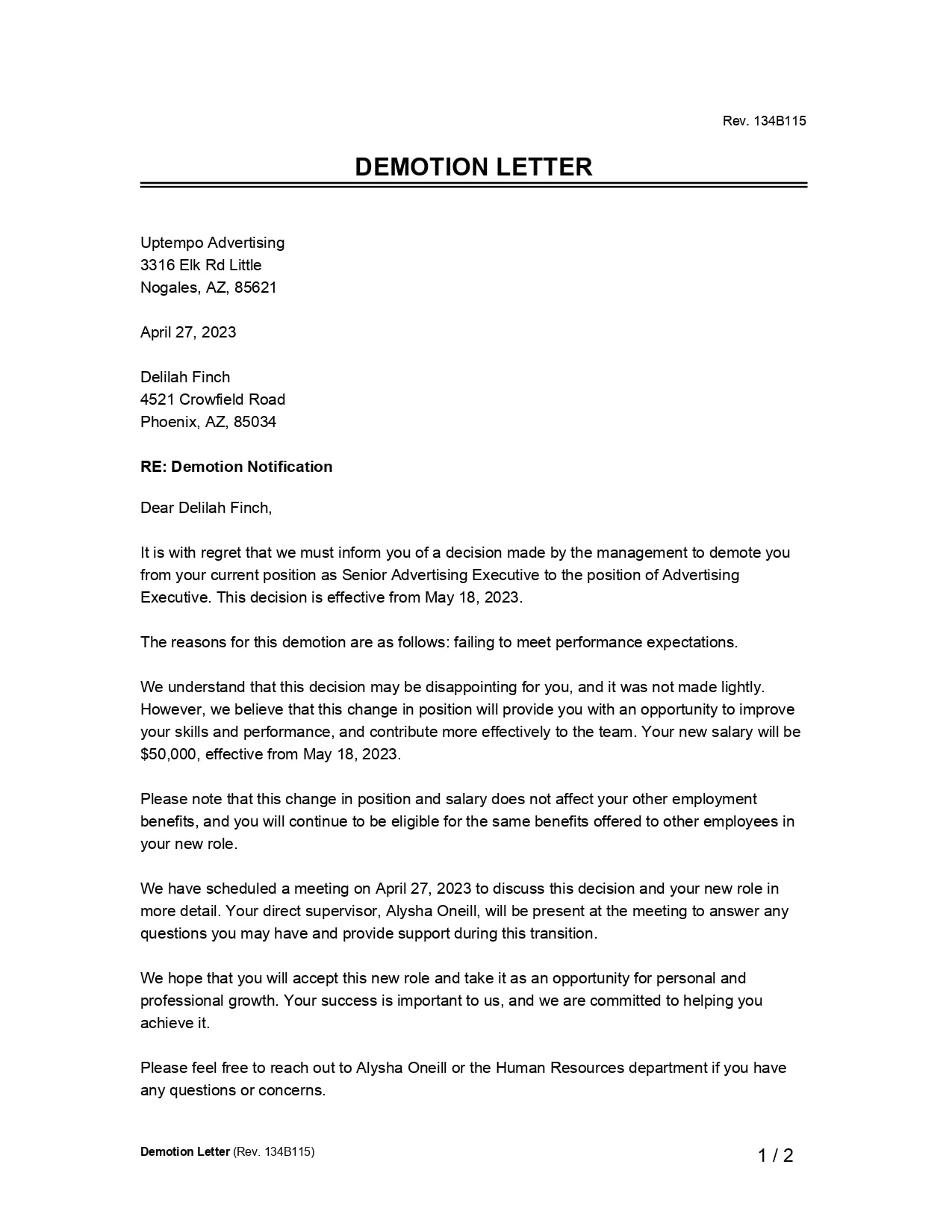
Use a Demotion Letter to inform an employee of the decision to demote them.

Published April 27, 2023
Written by Josh Sainsbury | Reviewed by Brooke Davis
Although running your own business is rewarding, managing employees can be challenging. Underperformance setbacks are an unfortunate part of a business that managers occasionally face. When employees consistently struggle in their current roles, a demotion may be necessary.
A demotion letter is an official document informing an employee of management’s decision to demote them. For example, downgrading or reducing an employee’s duties, work title, or role in the company is considered a demotion.
This notification should be short and formal. Only include the essential details of the decision to create an official record of the employee’s status change within the company.
Following the formal process of informing the employee with a demotion letter is crucial. Always use a demotion letter when:
To better understand how to notify your employee of a demotion, use the guide below while drafting your own.


While it’s never ideal to demote an employee, it allows underperforming team members to make improvements and show they still have the potential to contribute to the company’s success. Some reasons you might need to demote an employee include the following:
Managers and business owners should use clear communication to ensure the employee understands the reasons for the demotion, what changes to expect, and the responsibilities of their new role. Also, creating an official record of the demotion with a formal letter may help you avoid legal complications [1] from disgruntled employees.
Whatever the reason for the demotion, a careful approach can help the employee feel valued and eager to make improvements. Take these steps:
Demoting an employee is often complicated and awkward for employers. However, there are ways to deliver the news that doesn’t wholly deflate morale. To write an effective demotion letter that covers all of your bases, here are crucial steps to follow:
A demotion letter should state facts using a professional and direct tone. There should be no sarcasm, humor, or other attempts to lighten the situation.
Much like an employment termination letter , your demotion letter should be straightforward to avoid misunderstandings that could lead to legal issues. Avoid small talk or fluff that doesn’t directly address the demotion.
Provide the employee with the reasons for their demotion, such as poor performance, workplace violations, or elimination of their position. If applicable, list previous warnings, disciplinary actions, or performance evaluations that support the decision.
Include a short description of the employee’s new role, job title, and responsibilities. Schedule a separate meeting to discuss it in more detail.
Notify your employee of how this change will affect their pay. State the person’s new salary and when the new rate becomes effective. If applicable, also mention how the demotion will impact employee benefits.
Give a clear explanation of what the employee should do next. If you scheduled a meeting with the employee and their new supervisor, provide those details in the demotion letter.
Download our free sample demotion letter to employees to ensure you don’t miss crucial details.